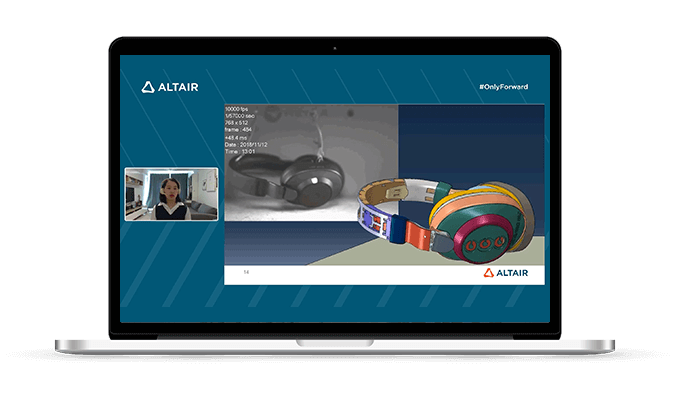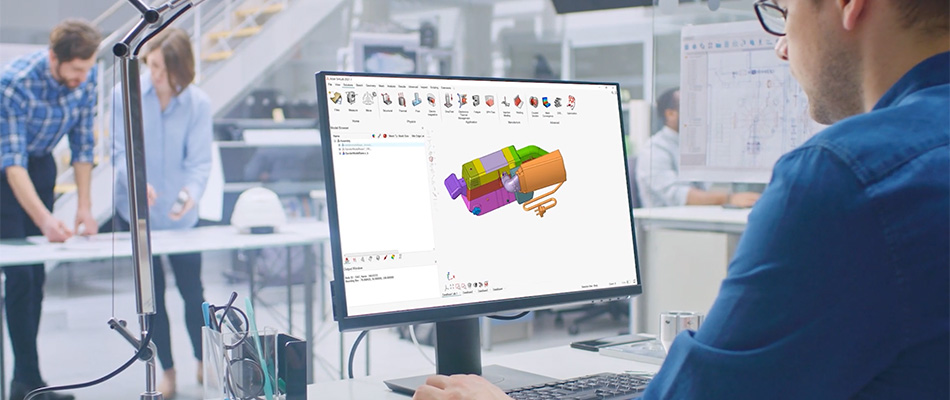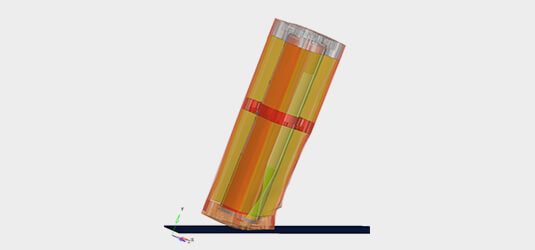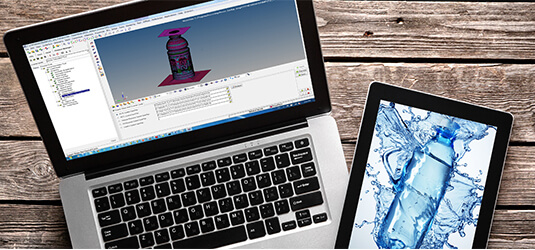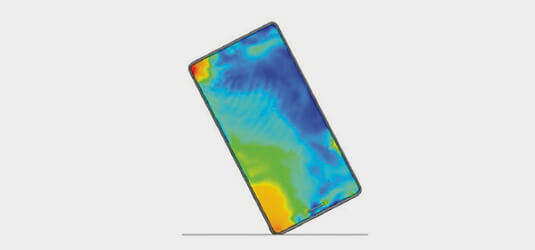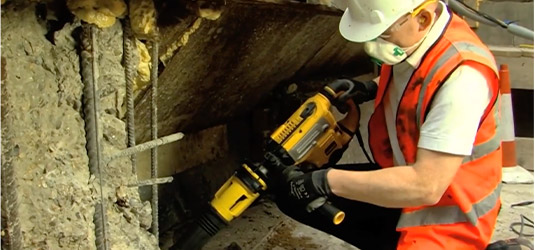
Drop Test Simulation
Impact analysis, also known as drop testing, is one of the most important stages of product design and development. Software that can simulate a drop test experiment accurately yields dramatic cost and time-to-market benefits for manufacturers.
Altair drop test simulation is applied in various industries including electronic devices, cell phones, household appliances, white goods, and packaging. Compared to manual drop tests performed by a person or a machine, automated drop tests provide accuracy and repeatability and offer better insights to optimize and learn from every iteration.
Physical Drop Tests vs. Simulation
Evaluating designs through simulation reduces late tooling changes
"Drop tests of prototypes produce unreliable, inaccurate results, because the materials from which they are made usually differ from those of mass-produced products, while drop tests of mass production trial products may lead to costly die modifications," explains Hironari Ogata, IAQ Business Unit Concurrent Development Team at Panasonic Ecology Systems
Ogata’s team originated a multi-step plan to analyze a product in each stage of its development. They began by drop-testing a single component, then moved on to a combination of several components, an assembled product, and finally the packaged products. At each step, the team employed Altair® Radioss® to calculate the drop-test impact.

How to Perform Drop Test Simulation
Simulation of drop tests and product misuse ensure robust and durable products. A drop test is a mechanical verification in which a component is dropped from a defined height onto a defined surface. It is usually carried out as part of a product’s quality management to ensure its safety and durability.
Drop tests can be performed in several ways but a numerical drop test conducted in a suitable program like Radioss – based on an explicit implementation of the finite element method (FEM) – allows for impact simulation to occur in the product development phase. Weaknesses and design flaws can be detected by analyzing the mechanical stresses in the material.
Drop Test Simulation Setup
The requirements for a virtual drop test go beyond the ground surface and drop height. When considering a model with full product assembly with pre-tensioned bolts, multi-material components, foam packing, and pre-stressed plastic foil wrapping , Altair's FE-solver and visualization technology are able to handle the complexity.
Altair’s open simulation solutions integrate seamlessly with all major design environments and CAD tools.
Drop Test Material Characteristics
In drop test simulation, manufacturing induced material behavior needs to be considered for specific material properties like strain rate dependent hardening. A comprehensive material database and an efficient material modeling approach improve the reliability of drop test results.
Material models from Altair® Multiscale Designer®can be used in implicit and explicit analyses in Altair® OptiStruct®, Radioss and many third-party FEA solvers.
Customer Successes in Drop Test Simulation
Packaging Drop Test Simulation
In packaging development every gram counts. Alpla develops and produces consumer goods packaging solutions. The company’s head of modeling and simulation discusses how Alpla used simulation to produce lighter packaging without compromising performance.
Robust Transportation
While Haier is known for its quality products, its air conditioners were being damaged during transportation, leading to higher costs and delays in final product delivery. Haier engineers turned to Altair to create a virtual simulation of a drop test that would provide extensive data on the stresses and strains involved.
Packaging Optimization
Mabe wanted to optimize product packaging for a combination washer-dryer. The challenge was to produce an optimized packaging design that considered a variety of loading scenarios and alternative package designs, and to do so very early in the design stage before any physical testing of the packaging was performed.
Packaging Simulation Automation
Amcor continually seeks innovative and lightweight container designs that are aesthetically pleasing and easy for the consumer to handle without compromising quality, performance, or safety. Simulation plays a major role in ensuring Amcor’s lightweight packages meet the functionality requirements.
Automated Drop Test Simulation
LG Electronics used Altair's automation capabilities and engineering expertise to significantly speed up and standardize routine drop test simulation processes, increase reliability and repeatability, and capture knowledge and practices. They were able to slice the time required for drop-test simulation from a week to just hours.
Impact and Electricity
Especially for electric-powered products, drop tests are prescribed by various standards which producers are required to adhere to, to be allowed to sell a product on a regulated market. In some cases, drop tests are also required to obtain quality labels. The passing criterion for a drop test can be defined, for example, as eliminating the risk of electric shock in a voltage-carrying product despite damage after dropping.


